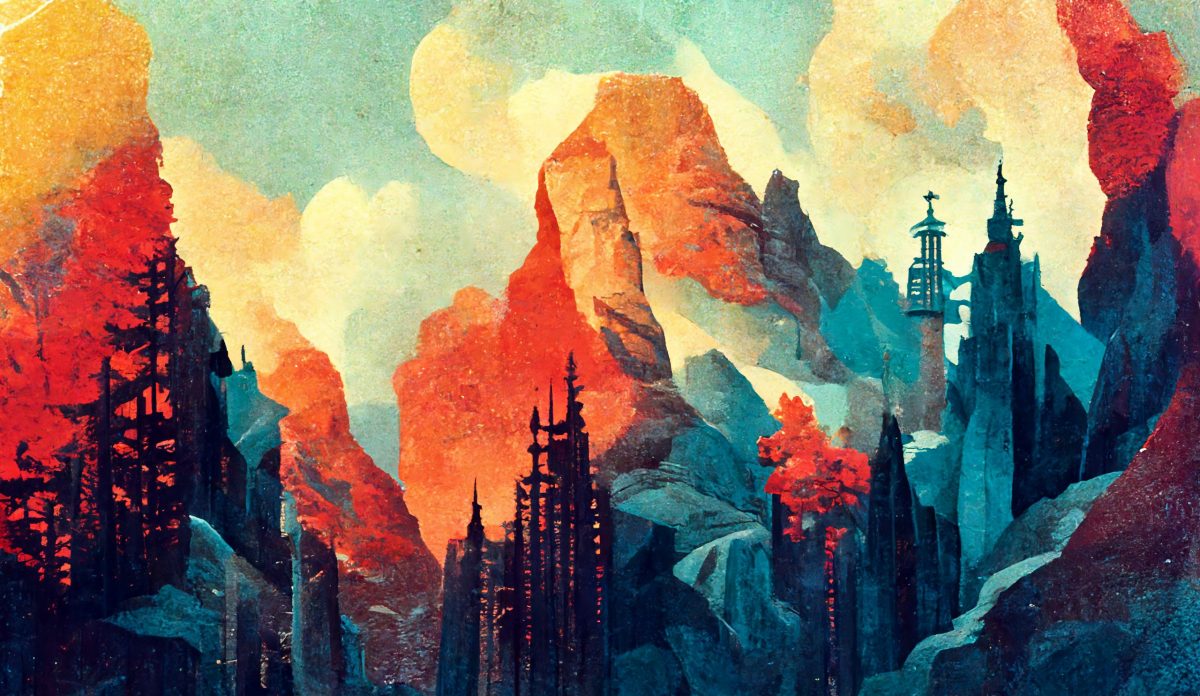Artificial intelligence has been used for years to create artwork ranging from paintings and drawings to music and even poetry. Built by training algorithms on large datasets of existing artwork and then using those algorithms to generate new pieces, AI-generated art can create some fascinating images.
How do AI art generators work?
AI art generators use machine learning algorithms and deep neural networks to generate art. Large sets of already-made art are used to teach these algorithms how to find patterns and styles that can be used to make new art.
The process of generating AI art typically involves the following steps:
Dataset Selection: The first step in creating an AI art generator is selecting a dataset of existing artwork that the machine learning algorithm can use to learn the style and patterns of the art.
Training: Once the dataset is selected, the machine learning algorithm is trained on the images in the dataset. This involves feeding the images through a neural network, which learns the features and patterns common to the dataset’s art.

Generation: After the machine learning algorithm has been trained, it can be used to generate new art. This involves inputting a random seed or a desired input and letting the algorithm create an output based on the patterns and features it has learned from the training data.
Refinement: The generated artwork is often refined using additional algorithms and techniques, such as style transfer or image filtering, to create a final image that is more aesthetically pleasing.
AI art generators can use different algorithms and methods depending on what the artist wants to make and how they want it to look.
How can you create art using AI?
If you want to create your artwork using AI, how you do this will depend on your needs. At present, the most common ways include, but are not limited to:
Use an AI art generator: One of the simplest ways to create art using AI is to use an existing AI art generator. These generators use machine learning algorithms and deep neural networks to generate new artwork based on a given input, such as a text description or an image.
Modify existing art using AI: Another approach to creating art using AI is to modify existing artwork using AI tools. For example, you could use a style transfer algorithm to transfer the style of one image onto another or use an image filtering algorithm to create a new version of an existing image.
Collaborate with an AI: You can also create art by collaborating with an AI system. This can involve using an AI system to generate a set of possible designs or elements and then selecting the ones you find most interesting to incorporate into your artwork.
Use AI to assist with the creation process: AI can also help with various aspects of the creative process, such as generating color palettes, suggesting compositions, or even creating rough sketches based on a set of parameters.
In general, making art with AI is an iterative and experimental process that involves exploring the capabilities of different AI tools and techniques and incorporating them into your creative process. It takes technical skill, an artistic eye, and a willingness to try new things and take risks as an artist.
Can you create your own AI art generator?
It is most certainly possible to create your own AI art generator. But making an AI art generator can be challenging. You must know much about machine learning, programming, and image processing. To make an AI art generator, you need to go through a series of steps that usually include the following:
Define the scope of your project: Decide what kind of art generator you want to create, the type of images you want it to generate, and the tools you will need to build it.
Collect and preprocess data: Gather a dataset of images that will be used to train your AI art generator. You may need to preprocess these images to ensure they are consistent in size, color, and format.

Train your model: Use a deep learning framework, such as TensorFlow or PyTorch, to train a model that can generate new images. You must define your model’s architecture and introduce it to your dataset.
Generate images: Use your trained model to generate new ideas. You may need to experiment with different input parameters to create a range of other images.
Refine your images: Use post-processing techniques to refine your generated pictures and create an aesthetically pleasing final product.
While it is possible to create your own AI art generator, it can be a challenging task. A solid background in machine learning or working with a team with experience in this field may be helpful.
AI art is a rapidly evolving field, stretching the definition of “art.” While some people are skeptical of machines creating art, it is clear that AI-generated works have already had a significant impact on the art world. They’ve been displayed in museums and galleries and sold for large sums at auction.

